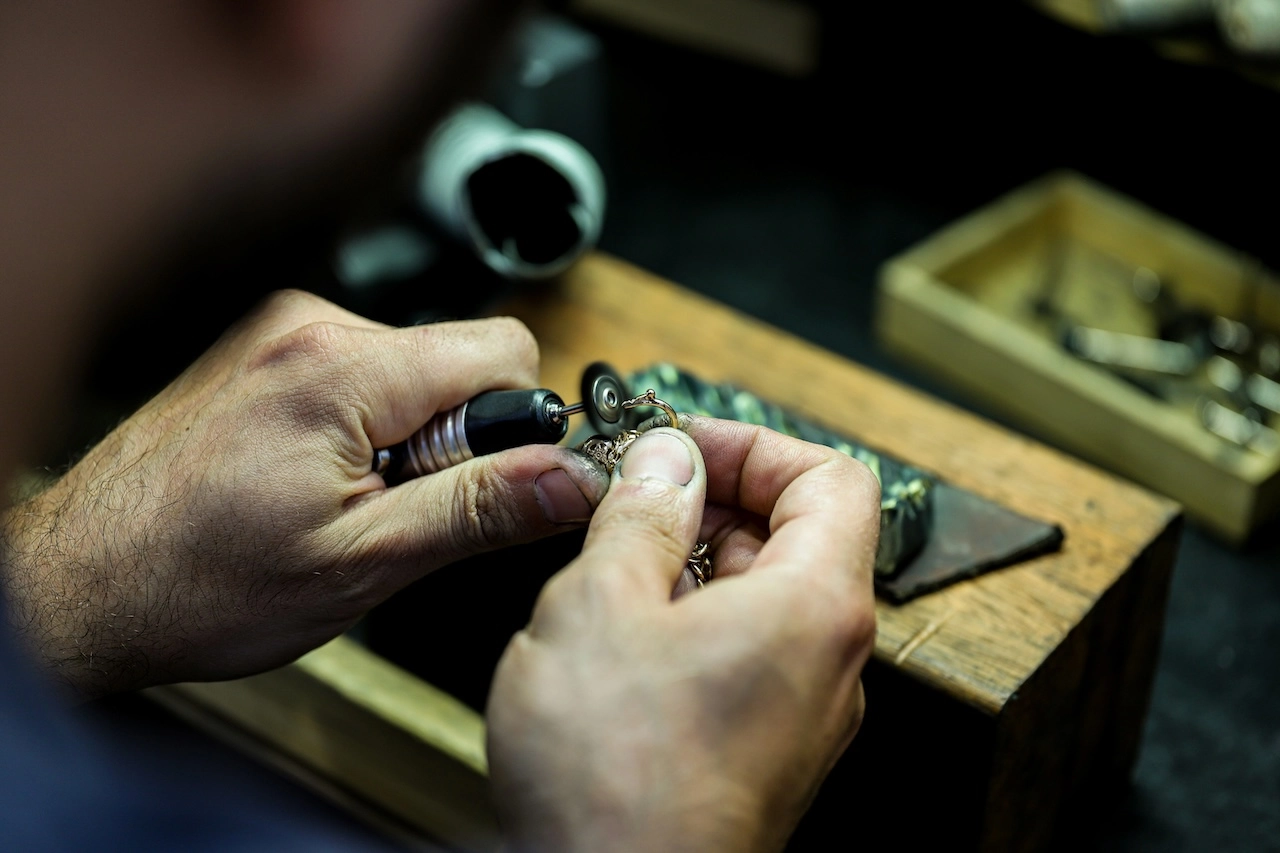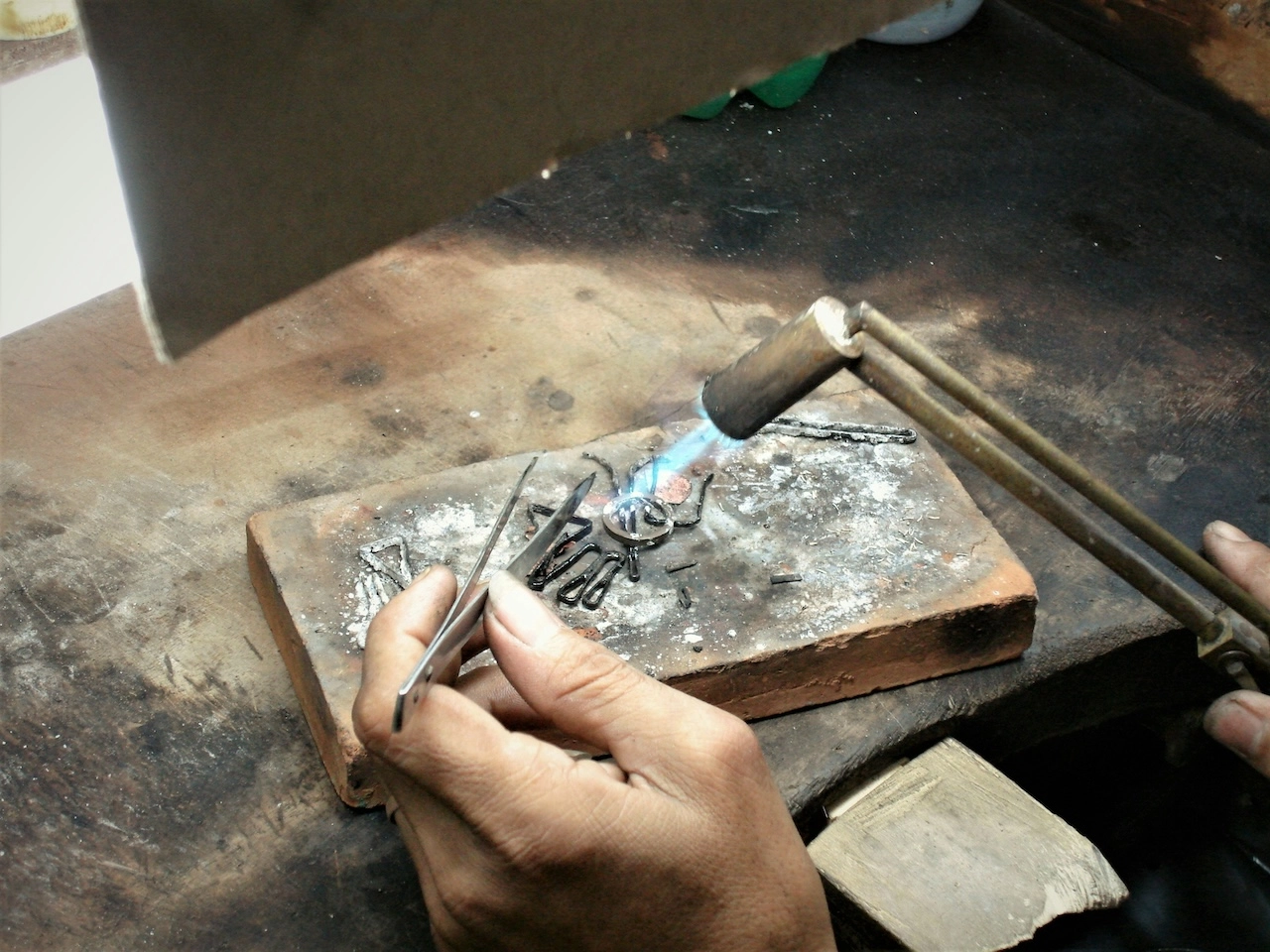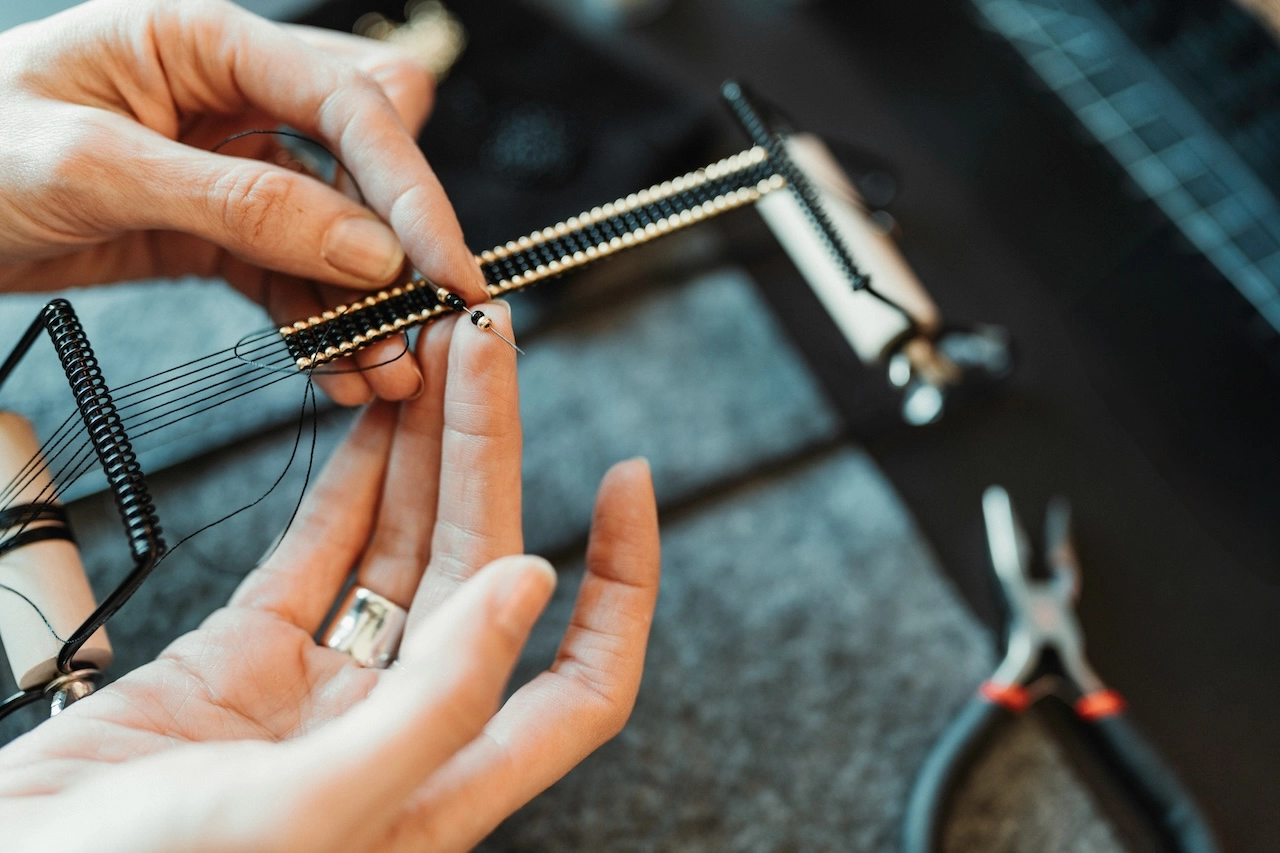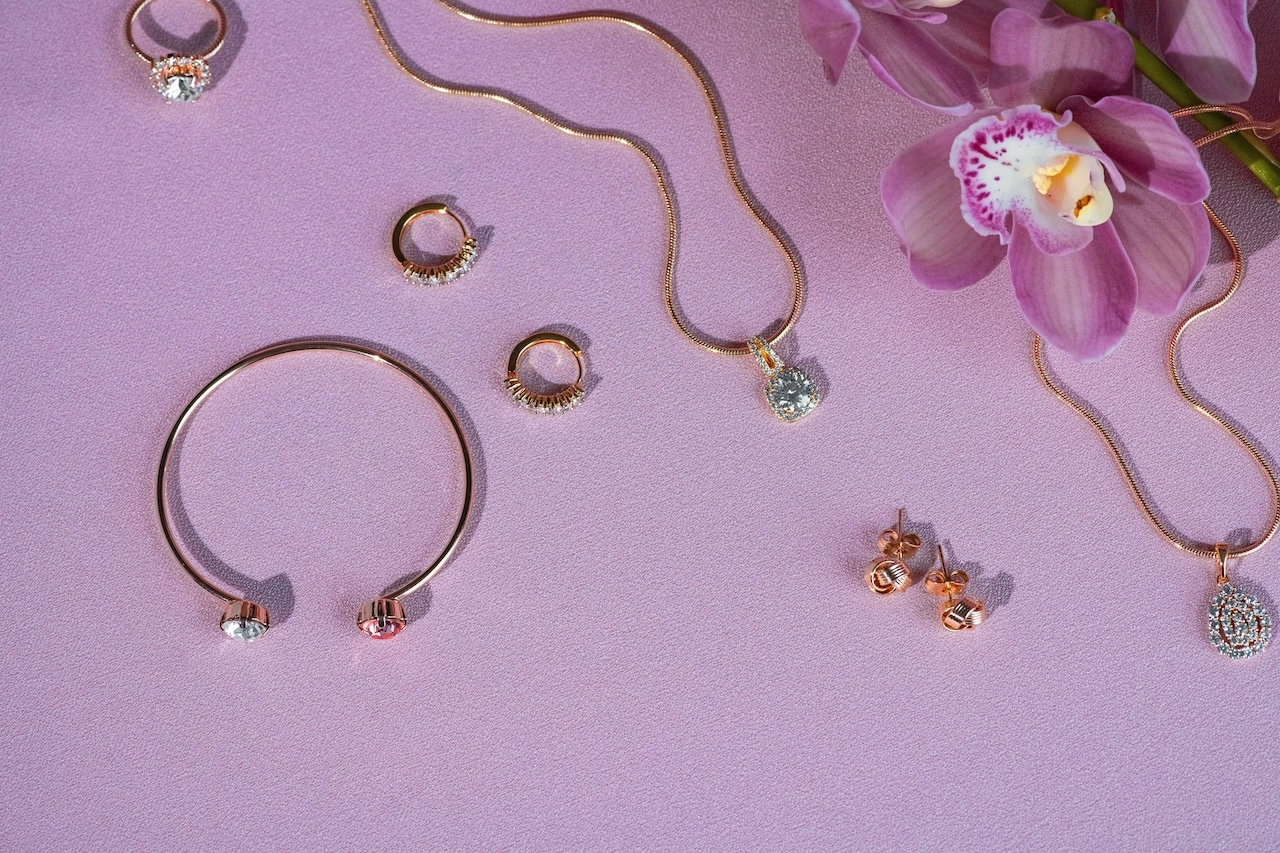I still remember the first time I picked up a pair of pliers and a small bag of beads to craft my very first bracelet. I was in awe of how a few simple supplies could transform into a glittering piece of art that felt uniquely mine. Over the years, that spark of creativity pushed me to explore more designs, learn new techniques, and eventually dream about selling my own jewelry. If you’ve ever had that kind of passion—feeling your heart flutter when you see a stunning gemstone or a perfect ring design—then you might be ready to start a successful jewelry venture of your own.
The idea of turning your creative flair into a profitable small business can seem intimidating, but trust me, it’s entirely doable. I’ve gone through the ups and downs of entrepreneurship and learned some key lessons along the way. I’d love to share those insights here so that you, too, can feel confident in taking the steps to launch a jewelry startup. By following these pointers—whether you’re figuring out how to start a jewelry business online or pondering how to start a jewelry business from home—you’ll be off to a bright start. Let’s dive in!
Laying the Groundwork
When I think back on the early days of turning my jewelry hobby into an actual business, I can’t stress enough how crucial it was to lay down a proper foundation. You might be itching to jump straight into designing breathtaking pieces, but a little homework at the beginning makes everything so much smoother in the long run.
Market Research 101
- Explore Your Niche I started by asking myself a bunch of questions: Do I want to specialize in elegant bridal jewelry, boho-chic beadwork, or bold statement pieces? How about eco-friendly upcycled materials? By narrowing down your focus, you become more appealing to a specific group of customers. It’s like finding your tribe in the massive jewelry world.
- Snoop on the Competition I also spent a lot of time browsing other people’s shops—on Etsy, Instagram, or dedicated online stores. I took notes on their prices, styles, branding, and even how they interact with customers. You’ll want to figure out the gaps in the market that you can fill. If everyone’s doing minimalistic gold chains, maybe you stand out with vibrant, large beaded necklaces. Gather ideas, but stay true to your own vision.
- Gauge Actual Demand One thing that really helped me was using keyword tools (like Google Trends) to see if certain styles or materials were on the rise or decline. If you see a big spike in searches for “rose gold wedding bands,” that might be a hint that there’s a growing customer base for that type of product. You can also visit local craft fairs or flea markets to see what’s trending in person. Every bit of insight helps you tailor your designs to actual market needs.
By knowing your niche, studying the competition, and getting a sense of demand, you’re essentially building a roadmap that’ll lead you to the customers who are excited to buy what you create.
Understanding Demand for Handcrafted Pieces
One of my biggest “aha” moments was realizing that many people these days really value the personal touch in handcrafted or artisanal items. In a world full of mass-produced goods, there’s something extra special about a piece that’s been crafted by hand. If that’s your style, here are some thoughts:
- Embrace the Story: Don’t hesitate to share your personal story—what inspired you to choose certain stones, the origin of your metals, or the eco-friendly nature of your packaging. People love a heartfelt backstory and will often pay more for something that has meaning.
- Set Realistic Prices: Handcrafted jewelry often commands higher prices, but that doesn’t mean you should go overboard. Make sure you’re covering all your costs and paying yourself for your time. A fair, well-thought-out price tag helps your customers see the value in each piece.
- Never Stop Learning: As someone who started out just stringing beads, I can tell you there’s a whole world of techniques to explore. From metalsmithing to wire wrapping, the more skills you pick up, the more possibilities you’ll have to set your brand apart.
If you focus on authenticity and storytelling, you’ll attract customers who value the love and craftsmanship behind each item—customers who are likely to return again and again.

Crafting a Business Plan
Once you have a sense of who you’re designing for and what makes your jewelry stand out, it’s time to organize all those ideas into a business plan. Think of it as a compass. You don’t want to sail your jewelry ship without knowing where you’re headed!
Setting Clear Goals and Objectives
- Pinpoint Your Short-Term Targets When I officially launched my business, I aimed to create and list ten new items in my online store within the first month, attend at least one local craft fair, and secure a handful of social media followers who genuinely loved my style. Defining these mini-goals helped me stay motivated and celebrate small wins along the way.
- Look at the Big Picture Long-term ambitions could include everything from selling your products at renowned jewelry boutiques to branching into men’s accessories or bridal collections. Keep those dreams in mind—visualizing future success can be a real morale booster, especially during challenging moments.
- Stay Flexible Your goals aren’t set in stone. If you discover a new trend or realize a certain collection isn’t resonating with buyers, don’t be afraid to pivot. Success often comes from learning to adapt while staying grounded in your core brand values.
Financial Considerations and Budgeting
- Estimating Start-Up Costs I’ll never forget the day I sat down to tally up my initial expenses. It included tools (pliers, files, soldering equipment), raw materials (metals, gemstones, packaging), and small fees like setting up a business license. A big chunk of my budget also went toward decent photography equipment—it’s worth the investment to show off your pieces in the best light.
- Tracking Ongoing Expenses Even after you launch, costs keep popping up. Website hosting fees, social media ads, craft show booth rentals, shipping materials—the list can grow fast. Stay on top of your monthly expenses so you’re not caught off-guard.
- Funding Strategies Some people save up their own money, others run a crowdfunding campaign, and some might apply for a small business loan. Think about what fits your situation best. If you’re starting small, you might not need huge loans right away. Just ensure you have enough to sustain your operations until revenue starts coming in regularly.
Branding and Design
Branding and design aren’t just about a logo and a catchy tagline—they encompass the entire vibe of your venture, from the color palette on your website to the little thank-you notes you tuck into each package. Creating a memorable brand identity is what ultimately helps you stand out in a crowded marketplace.
Finding Your Signature Style
Finding my unique design signature was like discovering my creative North Star. It started with a giant mood board filled with magazine clippings, swatches of fabric, bits of nature photography, and sketches of shapes that felt inspiring. Over time, patterns emerged:
- Seek Inspiration Everywhere: I’ve taken design cues from a leaf’s veins, architecture in foreign cities, and even the color schemes of vintage postcards. Jot down or snap photos of anything that makes your creative juices flow.
- Experiment Like Crazy: Don’t be scared to try new things—like mixing metal and resin, or painting enamel onto metal surfaces. Some experiments will fail, but others might lead to a whole new product line that becomes your signature.
- Stay Consistent: Once you’ve nailed down certain materials or a specific style, be consistent across all your marketing. Think about fonts, color palettes, packaging design, and product photography. That consistency helps customers instantly recognize your brand.
Materials, Suppliers, and Quality Control
- Find Trustworthy Suppliers I spent hours comparing supplier reviews and even contacted artisans who specialized in ethically sourcing gemstones. Building a relationship with suppliers can sometimes lead to discounts or priority service. They know you value quality, and that keeps them accountable.
- Maintain High Standards Whether you’re assembling each piece yourself or outsourcing parts of the process, keep an eye on quality. It only takes one or two bad reviews about a broken clasp to start damaging your reputation.
- Sustainability If the environment is important to you (it is to me!), explore recycled metals or fair-trade stones. Customers are increasingly eco-conscious, and your brand can stand out if you highlight responsible sourcing. It’s not just about looking good—it’s also about doing good.

Building an Online Presence
If I could share just one piece of advice with new jewelry entrepreneurs, it would be to take your online presence seriously from day one. When you’re looking at creative business ideas, remember that the internet allows you to reach people around the globe—which is nothing short of amazing.
Setting Up an E-commerce Store
- Pick Your Platform For me, starting out on Etsy was a no-brainer: it’s user-friendly, full of craft enthusiasts, and has a built-in audience. But as I grew, I moved to my own Shopify site. If you’re looking into how to start a jewelry business online, try combining a marketplace (like Etsy) with a standalone site for maximum reach.
- List Your Products Thoughtfully Take clear photos from multiple angles, and describe every aspect of your piece—materials, dimensions, care instructions, and even the inspiration behind the design. More detail = fewer customer questions and a smoother buying process.
- Make Checkout Easy An overly complicated checkout can scare off potential customers. Integrate secure payment options (credit card, PayPal, maybe even Apple Pay) and keep shipping fees transparent. No one likes surprise costs at the end.
Marketing Through Social Media
Social media can be your best friend or your biggest frustration, depending on how you use it. Done right, it’s a fantastic way to connect with fans and show off your creations:
- Platform Highlights:
- Instagram: Perfect for showcasing eye-catching images and behind-the-scenes stories.
- Pinterest: An underrated search engine where people look for inspiration (including jewelry ideas!).
- TikTok: Great for short videos—process clips, packaging sessions, or style tips.
- Consistency Matters: Post at least a few times a week. A consistent schedule keeps you on your audience’s radar. Show not just your finished pieces but also your workspace, your design process, or even your favorite snacks while you’re busy crafting!
- Engage, Don’t Just Broadcast: The biggest mistake I made early on was acting like social media was a one-way street. It’s called “social” for a reason. Ask questions, respond to comments, and encourage user-generated content—like customers tagging you in photos wearing your jewelry. It’s how you build community and trust.

Growth and Long-Term Success
Once you’ve found your groove—your designs are flowing, orders are coming in, and you have a growing social media following—it’s time to think about the big picture. How do you keep the momentum going?
Pricing and Customer Retention
- Price for Profit Early on, I undercharged because I worried that higher prices would scare people away. But if you’re not covering costs (including your time!), you’ll burn out fast. A higher price can also signal quality in the jewelry world, so find that sweet spot where you make a profit and customers recognize the value.
- Encourage Loyalty Offer perks like occasional discount codes for returning buyers or a “buy five pairs of earrings, get one free” type of deal. Handwritten thank-you notes and personalizing a package for a special occasion can also make a huge impression.
- Gather Feedback Don’t shy away from asking your customers for reviews or suggestions. I’ve improved my designs and even introduced new product lines based on what people told me they wanted. And when they see you acting on their feedback, they’re more likely to stick around.
Scaling Up and Diversifying
- Expand Your Product Lines If you primarily sell necklaces, think about bracelets or earrings next. Offer pieces at different price points—some folks might want a simple $25 piece, while others don’t mind splurging on a $200 custom item.
- Wholesale and Collaborations Reach out to local boutiques or online retailers that focus on handmade or artisanal goods. Collaborative collections or themed releases can also be a fun way to tap into new audiences.
- Automate or Delegate It’s exciting to feel overwhelmed by orders, but it can also lead to burnout. Consider outsourcing tasks like packing and shipping or even hiring a part-time assistant. Automation tools can help you manage inventory and schedule social media posts, freeing you up to focus on the creative side.
Just remember, bigger isn’t always better. Grow at a pace that still lets you maintain the personal touch that made your business special in the first place. If you rush, you might lose sight of why you started this journey—to create beautiful jewelry and share your passion with the world.

Final Thoughts on Your Jewelry Journey
If you’ve made it this far, you’re probably more than ready to take the leap. Learning how to start a jewelry business was one of the most exciting steps I ever took, and it led me to a life where I can be creative, connect with people who appreciate my art, and actually make a living doing it. Whether you launch a compact side hustle or aim for a full-blown global brand, the keys are preparation, authenticity, and passion.
No matter your vision—starting a jewelry business from home or looking into more ambitious expansions—the most important thing is to believe in your creativity and be willing to adapt. Challenges will pop up, from unexpected shipping issues to design flops. But if you keep learning, keep refining, and continue listening to your customers, your business will sparkle and shine just like the jewelry you create.
Go on—start chasing that dream. You’ve got this!
FAQs
Below are five frequently asked questions (and answers) about how to start a jewelry business, inspired by real curiosities I’ve encountered:
Q1: Is it really possible to run a jewelry business from my living room?
A1: Absolutely. Many talented designers begin by figuring out how to start a jewelry business from home. As long as you have space for a worktable, basic tools, and a secure storage area for supplies, you can produce high-quality pieces. The key is staying organized and setting aside consistent time for crafting, shipping, and marketing.
Q2: How do I handle negative feedback or product returns?
A2: It’s never fun dealing with criticism, especially when it’s about something you poured your heart into. However, responding calmly and professionally can actually turn an unhappy customer into a loyal one. Apologize, try to fix the issue, and offer a replacement or refund if warranted. Then, see if there’s a lesson in the feedback that can help you improve your future designs or processes.
Q3: Do I need insurance for my jewelry business?
A3: It’s wise to look into it, especially if you’re dealing with precious metals and gemstones. Business insurance can protect you in case of theft, damage, or liability claims. Start by exploring small business insurance providers who understand your specific needs.
Q4: Should I focus on online sales only, or also sell at local events?
A4: It depends on your time, budget, and target audience. Selling online can reach customers worldwide—handy for any creative business ideas—but local fairs and markets are fantastic for connecting face-to-face, getting immediate feedback, and building relationships in your community. Trying a combination of both usually gives the best results.
Q5: How can I stand out in such a crowded marketplace?
A5: Make your brand as personal and authentic as possible. Share the story behind your designs, use consistent branding, interact with your followers, and give your customers a top-notch experience. It might take some time, but staying true to your unique perspective and style will help you rise above the sea of copycats and mass-produced items.
